About us
Our history
Scroll to navigate
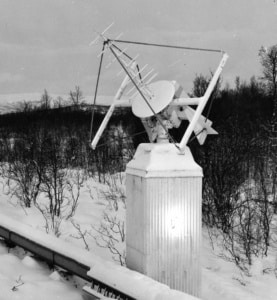
1967
Tromsø Telemetristasjon is established
The Royal Norwegian Council for Scientific and Industrial Research established Tromsø Telemetristasjon (TTS) to leverage Tromsø’s favourable geographic location for downloading data from satellites in polar orbits.
1974
A national satellite system
Norwegian Telecom (Televerket), formerly the Norwegian State Telecommunications Authority, made the pioneering decision to establish a domestic satellite system, the first of its kind in Western Europe. This innovative satellite system was designed to meet critical needs: providing the petroleum industry with reliable connections to its North Sea production platforms and enabling the Norwegian authorities to facilitate communications with Svalbard.
1976
Launching NORSAT
In the summer, NORSAT, a groundbreaking satellite system, was launched by Norwegian Telecom. NORSAT was the first satellite to establish connections with oil installations and support fleets, enabling seamless communication from the mainland to offshore oil fields in the North Sea and shipping fleets around the world. This revolutionary development marked a significant advancement in satellite communication for the petroleum industry and maritime operations.
1984
Pioneering live broadcasting
Norwegian Telecom initiated live broadcasts of Norwegian Broadcasting Corporation (NRK) programs to Svalbard and the North Sea, making it the second entity in Europe to deliver television programming via satellite.

1984
Field trials to Svalbard
Norwegian Telecom began field trials for television transmissions to Svalbard, utilising satellite technology to extend the reach of television programming to this remote region.

1986
Nittedal teleport begins full operations
The Nittedal earth station was commissioned, taking on the role of uplink station for Norwegian Broadcasting Corporation (NRK) programming. With the commencement of full operations, Nittedal teleport began transmitting Norwegian television to Svalbard as well as to oil production facilities in the North Sea, significantly enhancing communication and entertainment capabilities in these remote locations. NIttedal Teleport was established on November 7, 1986.
1987
Norwegian Space Agency joins ESA
The Norwegian Space Agency (NRS) was established in 1987 when Norway became a member of the European Space Agency (ESA). In 1991, Tromsø Telemetristasjon (TTS) and its activities were incorporated into the Norwegian Space Agency, further consolidating Norway’s capabilities and efforts in space research and satellite communication.
1992
Becoming a major communication provider
Norwegian Telecom acquired the DTH broadcasting satellite Marco Polo II from British Satellite Broadcasting Ltd., strategically establishing the 1° West position, known as “Hot Bird,” to target the Nordic countries. Norwegian Telecom became the largest Nordic operator of satellite-based transmission services for broadcasting purposes, with a primary focus on Norway. The satellite was renamed THOR 1. Norwegian Telecom became a major player in communications across Northwest Europe, and a leading global provider of mobile services for ships and aircraft.
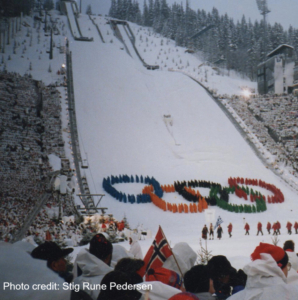
1994
Broadcasting 1994 Winter Olympics
Norwegian Telecom transitioned into a public corporation and took on the responsibility for all international televised broadcasting of the Lillehammer Winter Olympics. The extensive coverage included nearly 800,000 minutes of broadcast time from six station locations, utilising 49 uplink stations and 16 satellites. This monumental effort showcased Norwegian Telecom’s capabilities in managing large-scale, international broadcasting events.
1995
New infrastructure for NOSA
The Norwegian Space Agency reorganized parts of its activities into limited liability companies to streamline operations. Tromsø Satellite Station AS was established to manage operational activities, while Norsk Romsenter Eiendom AS (now Space Norway AS) was created to own and manage the infrastructure.
1995
From Norwegian Telecom to Telenor
Norwegian Telecom rebranded itself as Telenor. The company’s satellite activities continued under the name Telenor Satellite Services, maintaining its commitment to providing advanced satellite communication solutions.
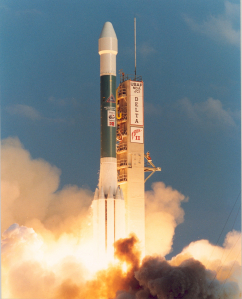
1997
Expanding broadcast services
Telenor Satellite Services launched the THOR 2 satellite, positioning it at 1° West. From this strategic location, the satellite distributed more than 110 television and radio programs across the Nordic countries, as well as Central and Eastern Europe, significantly expanding the reach and impact of Telenor’s broadcasting services. Although the satellite is no longer active, its contributions to enhancing communication and broadcasting capabilities remain noteworthy.
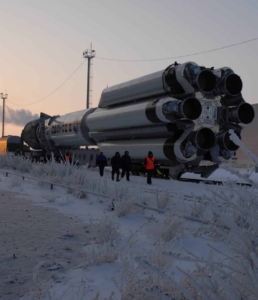
1998
Launching THOR 3
Telenor Satellite Services launched another satellite, THOR 3, further increasing the company’s capacity at the 1° West orbital position. This expansion was aimed at growing Telenor’s European video neighborhoods, enhancing its ability to deliver high-quality broadcasting services across the continent. Although the satellite is no longer active, its role in expanding Telenor’s broadcasting infrastructure was significant.

2001
Global broadcasting
Telenor Satellite Services introduced its Occasional Use division, specialising in the occasional broadcasting of live events around the world. This division continues to enable flexible and reliable satellite transmission services, catering to the dynamic needs of live event broadcasting on a global scale.
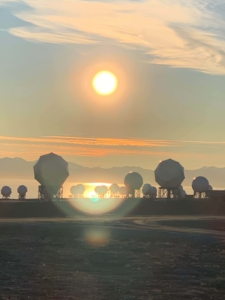
2002
Founding Kongsberg Satellite Services
In 2002, Space Norway separated its Svalbard satellite infrastructure business into a new subsidiary named Satellite Services AS. This company subsequently merged with Kongsberg Gruppen’s activities on Svalbard, forming the new entity Kongsberg Satellite Services (KSAT). Since its formation, KSAT has operated as a 50/50 joint venture between Space Norway and Kongsberg Gruppen, combining expertise and resources to provide advanced satellite services.
2002
Digital TV revolution
Telenor Satellite Services launched all TV channels in digital format, introducing a cutting-edge service platform at the 1° West orbital position. This platform combines digital broadcasting with a narrowband return channel and VSAT services, enhancing the quality, reliability, and versatility of its satellite communication offerings.

2003
Connecting Svalbard
Svalbard’s geographically advantageous location makes it ideal for downloading data from satellites in polar orbits. The efficient transfer of large volumes of data to the mainland became essential for further developing Svalbard’s satellite business. To address this need, the Norwegian Space Agency took the initiative to establish a 1,400-kilometre subsea fibre optic cable connection between the mainland and Svalbard.
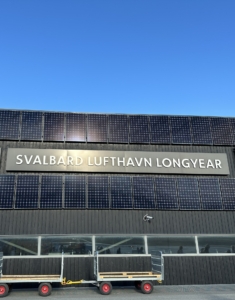
2004
Establishing fibre to Svalbard
Space Norway was assigned the task of establishing, owning, and operating the subsea fibre cable to Svalbard. The fibre connection became operational in January 2004 and is now indispensable for KSAT’s activities on Svalbard, as well as for the Longyearbyen community at large.
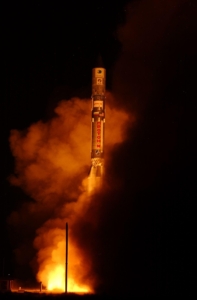
2004
Collaborating to launch THOR 10-02
Telenor Satellite Services and Intelsat required additional satellite capacity at the 1° West orbital position. In response, the THOR 10-02 / IS-10-02 satellite was launched as a collaborative project by the two companies. The satellite continues to operate successfully due to the ground-breaking life-extension service provided by Northrop Grumman’s MEV-2, which commenced in 2021.
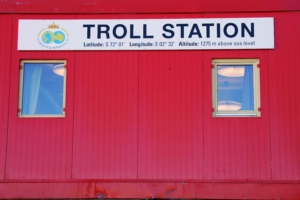
2005
Antenna to the Troll Station
Space Norway financed the installation of the first antenna dedicated to satellite communication at the Troll Station in Antarctica. This initiative significantly enhances the station’s communication capabilities, fostering better connectivity and data transmission in one of the most remote regions on Earth.
2006
New name for Telenor Satellite Services
Telenor has entered into an agreement with Apax Partners, France, for the sale of its mobile satellite services business, Telenor Satellite Services. Despite this sale, the 1° West operations and ownership of the satellite infrastructure remain under the name Telenor Satellite Broadcasting, ensuring continuity in our satellite broadcasting services.
2006
Launch of new European HDTV services
Euro-Fibre, formerly known as the MSNW multi-service network, commenced operations, delivering high-definition television (HDTV) broadcasts and linking major media hubs across Europe. This initiative represents a significant step forward in enhancing the quality and reach of digital broadcasts throughout the continent.
2007
Launching DTT services
Telenor Satellite Broadcasting embarked on a new era by launching its first Digital Terrestrial Television (DTT) services. This milestone marked a significant advancement in our broadcasting capabilities, providing high-quality digital television to the European audience.
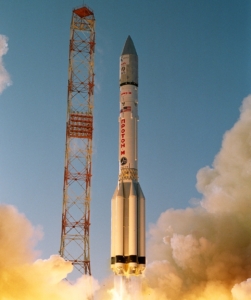
2008
Launching THOR 5 and IPTV platform
Telenor Satellite Broadcasting successfully launched THOR 5, positioning it at 1° West. This launch marks the first phase of a program designed to replace the retiring THOR 2 and THOR 3 satellites. Following the launch of THOR 5, the IPTV platform was also released. THOR 5 remains operational, providing broadcasting and maritime communication services.
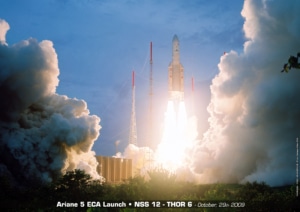
2009
Launching THOR 6
Telenor Satellite Broadcasting launched THOR 6, featuring 36 transponders; 16 dedicated to the Nordic countries and 20 to Central and Eastern Europe. THOR 6 currently supports both the broadcasting and maritime mobility sectors and continues to operate successfully today.
2013
Finally Space Norway
The company is officially renamed Space Norway. In late 2013, ownership of Space Norway was transferred from the Norwegian Space Agency to the Norwegian Ministry of Trade, Industry and Fisheries.
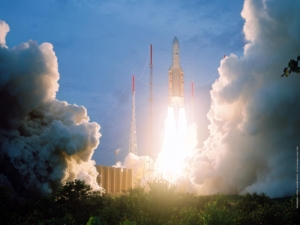
2013
Payload for communication
Space Norway collaborated with KSAT and Telenor Satellite Broadcasting in 2013/2014 to bring a transponder on Telenor Satellite Broadcasting’s THOR 7 satellite onboard THOR 7. This payload should offer satellite communications at both the North and South Poles.
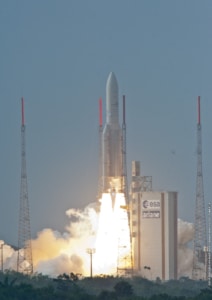
2015
THOR 7 takes off
Telenor Satellite Broadcasting’s new High Throughput Satellite (HTS), THOR 7, has been launched. Designed to sustain and expand broadcast capacity, THOR 7 is equipped with a specially designed payload to support growth in the datacom market for both mobile and fixed VSAT terminals using the new Ka-band frequency. Additionally, the satellite provides a critical communications link to the Troll Station in Antarctica and remains fully operational.
2015
Polar communications
Space Norway acquired a transponder on Telenor Satellite Broadcasting’s THOR 7 satellite, establishing a communications link with the Troll Station in Antarctica. This acquisition enables KSAT (Kongsberg Satellite Services) to downlink data from satellites passing over the South Pole. The communications link is leased to KSAT, making it the only operator capable of offering satellite communications at both the North and South Poles.
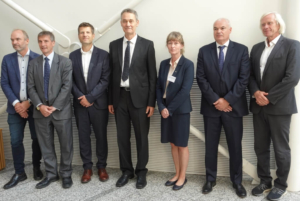
2016
Collaboration on satellite radar system
KSAT (Kongsberg Satellite Services) and Space Norway initiated a preliminary project aimed at developing a new satellite-based radar system for maritime surveillance to enhance maritime safety and security by providing high-resolution radar imagery and real-time monitoring capabilities. The goal is to significantly improve the ability to detect and track vessels, contributing to more effective maritime operations and environmental protection.
2016
Rebranding Telenor Satellite Broadcasting
Telenor Satellite Broadcasting has rebranded to Telenor Satellite to better represent the expanding range of the company’s communication services.
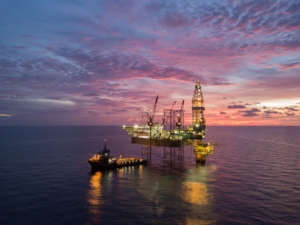
2016
Oil, gas and maritime VSAT
Telenor Satellite established a strong foothold in the offshore oil and gas sector and maritime industry. Launching the Ka-band service on the THOR 7 High Throughput Satellite (HTS) provides a solid foundation for continued growth in these markets.
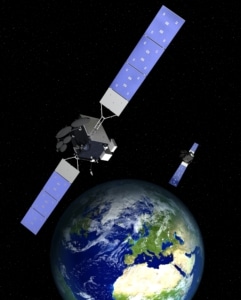
2018
Green light for Arctic broadband
The Norwegian Parliament approved conditional equity financing for the realisation of broadband communication in the Arctic, showing the government’s commitment to enhancing connectivity in the Arctic. The funding supports the deployment of advanced satellite technology, aimed at providing reliable and high-speed internet access to Arctic communities, maritime operations, and scientific research projects.
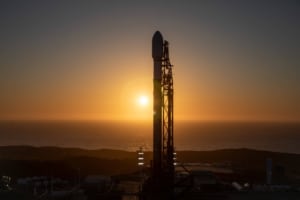
2019
The largest satellite program
Space Norway projects satellite-based broadband in the Arctic, marking a significant milestone in the company’s history with the Arctic Satellite Broadband Mission (ASBM). With an investment framework of approximately 450 million US dollars, ASBM stands as the largest satellite program ever conducted in Norway with two satellites in a highly elliptical orbit, providing broadband coverage north of the 65th parallel.
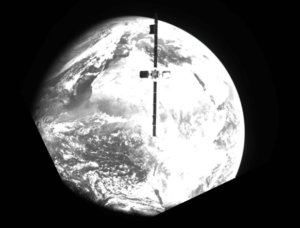
2021
In-orbit life-extension
Northrop Grumman’s Mission Extension Vehicle (MEV-2) has successfully docked with THOR 10-02 / Intelsat 10-02, providing a groundbreaking in-orbit life-extension service for an operating commercial satellite. This world-first achievement effectively increases the lifespan of THOR 10-02 by several years, keeping the satellite operational to this date.
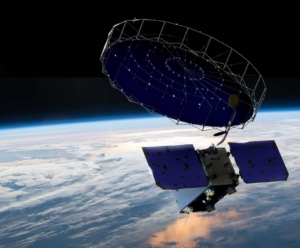
2022
New era for radar surveillance
Space Norway commenced the construction of a test and demonstration satellite for radar-based maritime surveillance, MicroSAR, marking the culmination of several years of preparation. The launch is scheduled for 2025. The MicroSAR project aims to deliver high-resolution radar imagery for maritime surveillance and various other applications.
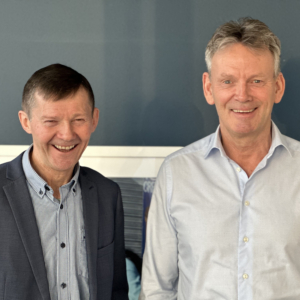
2023
Space Norway strikes a new deal
Space Norway acquires Telenor Satellite. This enhances Space Norway’s capabilities in satellite communications and expand its service offerings to a broader range of customers. Space Norway strengthens its position in the global satellite industry, ensuring reliable and innovative solutions for both government and commercial enterprises.
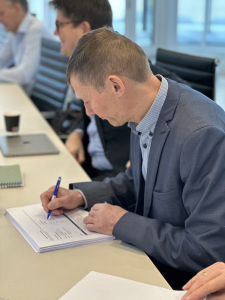
2024
Completing the acquisition
Space Norway emerges as Northern Europe’s leading satellite operator and a key player in the European space sector. This acquisition consolidates Space Norway’s market position and enhances its capacity to deliver advanced satellite communication services. With expanded resources and expertise, Space Norway is solidifying its reputation as a major force in the satellite industry across commercial data communications, broadcasting, and government services.

2024
MEV-2 to continue life-extension servicing of THOR 10-02
Due to the excellent health of the satellite and the successful services provided by MEV-2, the commercial agreement for the life-extension service with Northrop Grumman will continue, allowing THOR 10-02 / Intelsat 10-02 to remain operational for several additional years.
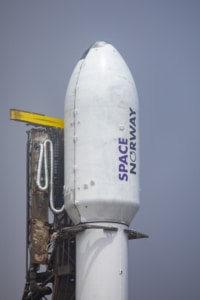
2024
Historic launch of ASBM satellites
SpaceX has launched Space Norway’s highly elliptical orbit (HEO) satellites, ASBM1 and ASBM2, from Vandenberg, USA. Onboard these satellites are payloads from the Norwegian Armed Forces, the U.S. Space Force, and the commercial satellite operator Viasat. Additionally, one of the satellites carries a Norwegian-developed payload designed to measure radiation levels.
- 1967
- 1974
- 1976
- 1984
- 1986
- 1987
- 1992
- 1994
- 1995
- 1997
- 1998
- 2001
- 2002
- 2003
- 2004
- 2005
- 2006
- 2007
- 2008
- 2009
- 2013
- 2015
- 2016
- 2018
- 2019
- 2021
- 2022
- 2023
- 2024